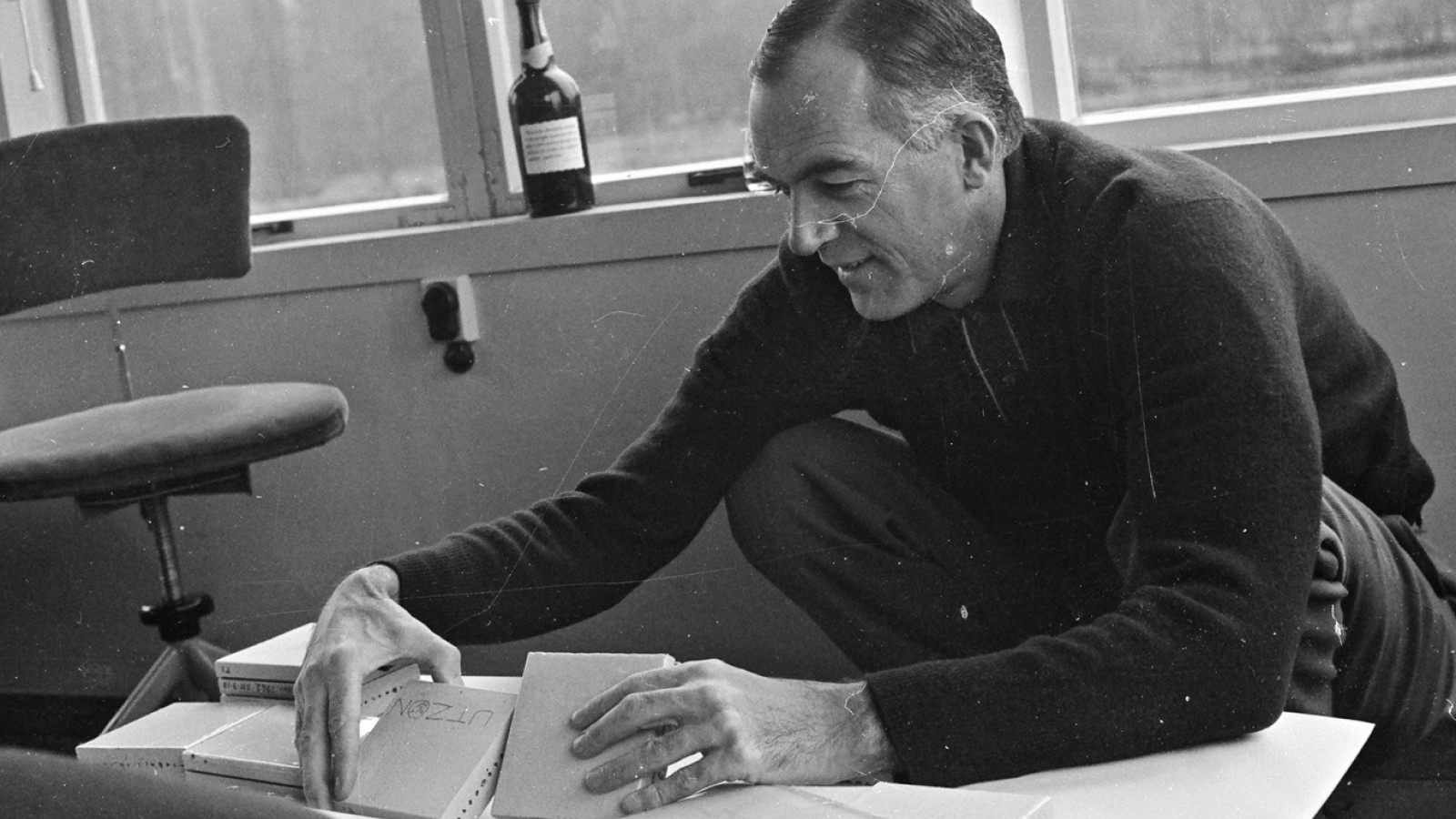
The Innermost Being of Architecture
An essay by Jørn Utzon
We put everything in relation to ourselves. Our surroundings influence us through their relative size, light, shade, colour etc. Our condition depends entirely on whether we are in a city or out in the countryside, on whether the space in which we find ourselves is large or small.
Our reactions to these circumstances are at first quite unconscious, and we only register them on memorable occasions, for instance in the sublime enjoyment of a detail or a happy alliance with the surroundings er by a pronounced feeling of distaste.
But to elicit our unconscious reactions until they become consious to us ought to be our starting point. By rehearsing our ability to grasp these differences and their effect on us, by being in contact with our surroundings, we find our way in to architecture’s innermost being.
If we want further to enhance our grasp of architecture, we must understand that amidst all changes in circumstances, the architectonic expression is created in an alliance with the social structure. The true innermost being of architecture can be compared with that of nature’s seed, and something of the inevitability of nature’s principle of growth ought to be a fundamental concept in architecture.
If we think of the seeds that turn into plants or trees, everything within the same genus would develop in the same way if the growth potentials were not so different and if each growth possessed within itself the ability to develop without compromise. On account of differing conditions, similar seeds turn into widely differing organisms.
Our surroundings, the time in which we live, are quite different from what they ever were before, but the innermost being of architecture, the seed, is the same. The study of already existing architecture must consist in letting ourselves be spontaneously influenced by it and appreciating the ways in which solutions and details were dependent on the time at which they were created. For the architect to work in sovereign control of his means, he must experiment, practice in the manner of a musician playing his scales, practice with mass, with rhythms formed by masses grouped together by colour combinations, light and shade etc.; he must sense with fervent intensity and generally rehearse his shape-creating expertise.
This requires close familiarity with materials: we have to be able to understand the structure of wood, the weight and the hardness of stone, the character of glass; we must become one with our materials and be able to fashion and use them in accordance With their constitution.
If we understand the nature of the material, we have its potential close at hand and far more tangibly titan if we base ourselves on mathematical formulae and art forms. To the architect, rnathematics help him confirm that what he assumed was right.
It demands a good healthy common-sense understanding of life. An understanding of walking, standing, sitting and lying comfortably, of enjoying the sun, the shade, the water on our bodies, the earth and all the less easily defined sense impressions. A desire for well-being must be fundamental to all architecture if we are to achieve harmony between the spaces we create and the activities to be undertaken in them. This is quite simple and reasonable.
It requires an ability to create harmony from all the demands made by the undertaking, an ability to persuade them to grow together to form a new whole – as in nature; nature knows of no compromise, it accepts all difficulties, not as difficulties but merely as new factors which with no sign of conflict evolve into a whole.
To understand all the inspiration present in every one of Man’s countless means of expression, to work on the basis of our hands, eyes, feet, stomachs, on the basis of our movements and not of statistical norms and rules created on the principle of what is most usual – this is the way forward to an architecture that is both varied and human.
It is necessary to be in tune with the age and with the surroundings, to see inspiration in the task itself, if the requirements of that task are to be translated into an architectonic language creating a unity of all the different factors.
At the same time the architect must have an ability to imagine and to create, an ability that is sometimes called fantasy, sometimes dreams.
– Jørn Utzon, 1948